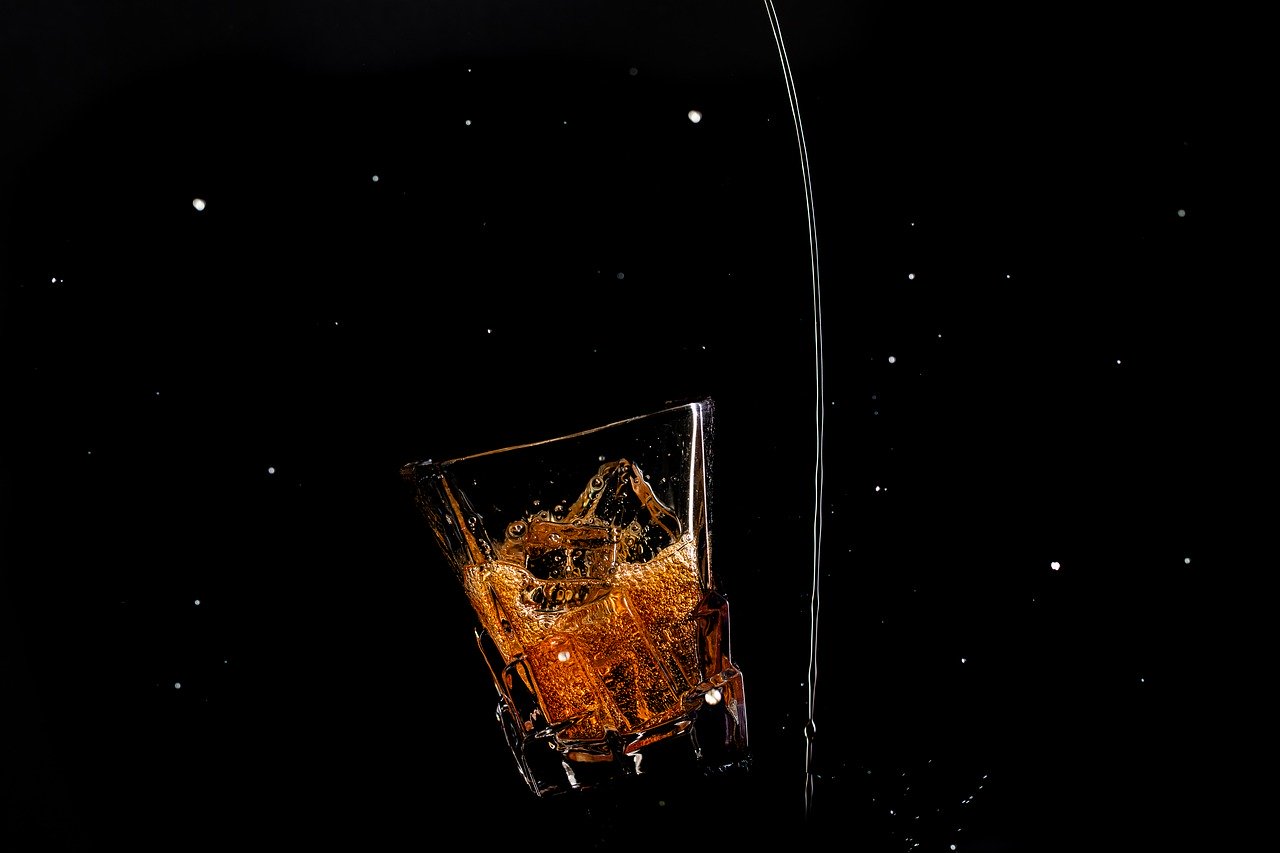Photo by Il-Luminatore on Pixabay
Do you know how is whisky made? A drink so important that it arouses the curiosity of everyone who enters the world of spirits. We’ll show you how.
Scotland, is the first producer of whisky in the world. It all started on the Isle of Arran across the rivers that run through the island in Scotland. To exploit it, a distillery opened in 1995 in the north, in Lochranza. Here, in this workshop, they mix the barley with the water in the mash tun before fermenting. After 40 hours, the sugar is transformed into alcohol and in the copper stills, the steam is transformed into eau-de-vie. The degree of alcohol begins to increase, but it takes three years to obtain a full-bodied whisky.
9 elements for the creation of whisky
Without these elements the creation of whisky would not be possible. To produce it, it is necessary to go through the stages with three essential ingredients: water, barley and yeast.
1. Malting
This step turns the barley into whiskey and begins with the soaking in which the barley will begin to germinate. A process that takes weeks or even months. The barley rests in periods in the air and continues to germinate. After soaking, the barley pours into drums (mash tun) where fresh, humidified air is blown in to control the temperature.
2. Milling
This is the first part of the whisky-making process in the distillery. The malted barley needs to be dried to a moisture level of around 5% before milling, otherwise the mill will be clogged. The mill then grinds the dried malt to form a coarse flour called mash.
3. Mashing
The mash is introduced into the mash tun and hot water is added. The enzymes of the malting stage are used to dissolve the sugars. It is necessary to create a “point of attack”, i.e. an optimum heat at which the enzymes break down the starch. It is vital to control the temperature, otherwise the enzymes will be killed. The resulting liquid in this mashing process is called must.
4. Fermentation
The must, once cold, goes into containers called fermentation tanks, which are generally made of larch or pine wood. Although it is more common today, stainless steel. Yeast is added to the cooled must as it enters the vat to start fermentation. The yeast cells will multiply and convert the mixture into alcohol and carbon dioxide. Now, the mixture is called a wash. As the fermentation progresses, the temperature and alcohol level of the wash increases to about 35 degrees Celsius and this slows down the multiplication of the yeast. In the end we obtain a liquid with an alcohol content of between 8 and 9%.
5. Distillation
The distillation technique consists of heating a liquid to separate its component substances. But in the manufacture of a pure malt Scotch whisky, Scottish distillers use copper stills in a process known as batch distillation.
The wash heats in a wash still and when it reaches 78ºC the alcohol boils and the vapor rises to a condenser. Here we create a liquid known as ‘low wine’, with an alcohol content of around 23% which then transfers to a second ‘alcohol’ still. The process repeats to produce a liquid with about 70% alcohol content.
6. Ageing
The new liquor will turn into Scotch whisky after remaining in oak barrels for at least three years. Some pure malts will age up to 70 years. But the aging process is not exactly about age. It’s more about time and wood. Oak is the preferred wood for Scotch whisky because of its intricate chemistry, with cellulose and hemicellulose caramelising the liquid, adding sweetness and colur. It has lignin, which breaks down, giving complexity and notes of vanilla; and tannins that provide astringency, fragrance and delicacy. The oak wood favors oxidation, which eliminates hardness and increases the fruity quality.
Don’t drink and drive. Enjoy responsibly.

